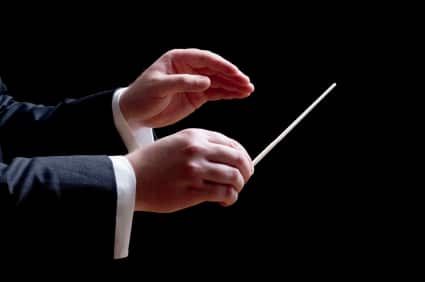The Three Dimensions Of Meeting Stewardship
Recently I wrote about the need to create meeting stewards for our conferences and events to plan, orchestrate and oversee each conference attendees’ experiences.
We can’t continue on the trajectory of piecemealing together conference logistics, content and other meeting fragments and expecting a sophisticated, quality attendee experience. It just doesn’t work.
Attendees know when the experience feels disconnected, impersonal, out of whack and thrown together. They can feel when something was a political add-on or from far left field that has no context within the rest of the meeting.
Defining Meeting Stewardship
A meeting steward helps meeting owners construct and nurture suitable meeting habitats. They oversee the use of meeting resources to create and facilitate the best attendee experience possible.
Meeting stewards are responsible for overseeing and managing the various ingredients of an event as it relates to the overall attendee conference experience. Much like an online community manager that engages customers with a brand’s online experience, the meeting steward intentionally oversees the organization and planning of the attendee’s conference experience.
Meeting stewards are those professionals with enough experience of meetings logistics and the workings of a community to understand its needs. They have enough experience with, or interest in, meetings to take leadership in addressing those needs as well. Meeting stewards include selecting and configuring various types of meeting formats and interactions that support learning, community and person-to person connections.
The Three Dimensions Of Meeting Stewardship
Meeting stewards work with others to shape a conference’s direction and development. The Meeting steward focuses on three dimensions–domain, practice and community–that place a demand on the meeting.
1. Domain
How does the meeting enable members of communities of purpose explore, define and express a common identity? What learning landscape should be pursued that address attendees’ issues? How can we negotiate a learning agenda that meets the needs of a variety of levels of experiences and not cater to the masses only? Does the meeting help attendees figure out and reveal how their profession relates to other professions, individuals, groups, organizations or endeavors?
2. Practice
How does the meeting assist in sustained mutual engagement around an issue, profession or industry standard? Can the meeting provide new windows into each other’s routines? What learning activities within the meeting can make this possible? Can the meeting accelerate the cycle through which attendees explore, test and refine good practices? Can it help create a shared context for community members to have ongoing exchanges, articulate perspectives, accumulate knowledge and process access to stories, tools, solutions and concepts?
3. Community
How can the meeting support an experience of togetherness that makes a community a social container for learning together? Can the meeting help people connect with like minds, find each other and reduce a sense of isolation or lone rangers? Does the meeting intentionally serve as a conduit for person-to-person connections enabling members to get to know each other on a deeper level in relevant ways? Can the meeting enhance the simultaneous interplay of diversity and common ground? Does it allow various people and groups to take initiative, assume leadership, develop roles and create subgroups, projects and conversations.
Creating A Social Container For Learning And Connecting
Meetings often play a key role in the dissemination and appropriation of new learnings, practices and strategies. The social lens needed to understand how conference attendees respond to a variety of meeting experiences regarding these learnings and practices is helpful in understanding how communities of practice and purpose develop and grow. Meeting stewards play a pivotal role in supporting the intertwined evolution of domain, practice and community.
A meeting steward can’t act in a silo. They need to enlist an army comprised of staff, volunteers and service providers to help accelerate connections and nurture community. It’s a cultural shift.
How do you propose accomplishing this? What other tasks would you add to the meeting stewards role?



Social comments and analytics for this post…
This post was mentioned on Twitter by COVETTES: RT @ZeristaSoftware: RT: The Three Dimensions Of Meeting Stewardship: Recently I wrote about the need to create meeting steward… http://bit.ly/bmTeNQ…
Very interesting proposition and one that is closely aligned with one being propagated by Susan Radojevic, The Peregrine Agency, who spoke at last year’s WEC in Salt Lake City. I posted more about this on my blog which is listed above in the form. I believe hotels and resorts, along with several hospitality associations, should be adopting this formula and pushing it out to meeting planners.
Thanks,
Steven
‘@Steven
Thanks for dropping by and adding your views. Susan does have some very powerful thoughts about strategic event alignment. I’ve read some of her thoughts as well as Mary Boone’s who has similar insights.
I see two sets of three further plains here:
Domain – with each other, today
Practice – with myself, tomorrow
Community – with everyone, in the future
What I can see here is a 360° way for stewards to make sure there is learning value before, during and after. Very nice.
I will think this through more!
Lovely insights Scott!
Thank you for sharing this Jeff, this is exactly what we focus on at The World Experience Organization (WXO)
How to we design experiences that are not only memorable, but also meaningful, and perhaps transformational.
Would love to connect with you via LinkedIn